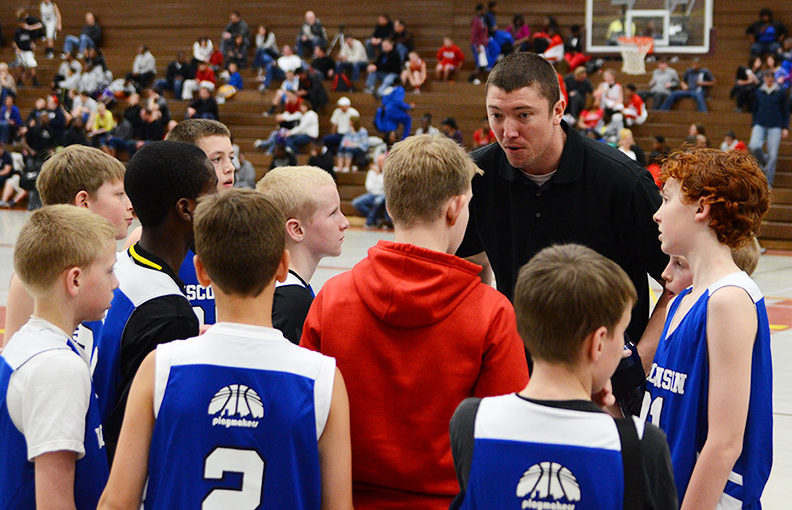Former Athlete Sues NCAA Alleging Conspiracy, Anti-Competitve Scholarships
Life was cheap during Roman times, and no one knew that better than gladiators – men pitted against one another in fights to the death for the viewing pleasure of both society’s elite and the masses.
The gladiators of ancient times lived and died by the whims of those more powerful than themselves and even when victorious on the battlefield, all they ever really won was the chance to fight – and maybe survive – another day.Today’s college athletes face a similar dilemma. Though often lavished with adulation by college coaches and fans due to their extraordinary physical gifts, student-athletes are vulnerable, able to be cast aside like damaged goods due to injury or some other external circumstance beyond their control.
That’s exactly what happened to Joseph Agnew, a student-athlete who just filed a proposed class-action lawsuit against the National Collegiate Athletic Association alleging the NCAA has conspired with colleges and universities to impose artificial limits on sports scholarships, actions the suit claims violate federal antitrust laws.
Filed in the U.S. District Court for the Northern District of California, the lawsuit alleges the NCAA and its member institutions forbid member schools from offering multi-year scholarships and illegally limit the number of scholarships in large part to maintain the profitability of the institutions’ sports programs, a violation of the Sherman Act, a federal antitrust statute designed to prevent unlawful collusion between entities that should be competing.
The NCAA, whose member institutions number nearly every major college or university in the country, sets limits on the number of scholarships those institutions can grant, and prohibits schools from granting multi-year scholarships. The suit claims these limitations drive up the cost of a four-year education for student-athletes.
According to the suit, if colleges were forced to compete for student-athletes in an open market without limits to scholarships, the number of scholarships would increase, and schools would be forced to treat the student-athletes more fairly by offering multi-year scholarships.
The prohibition on multi-year scholarships leaves student-athletes who lose their scholarships through injury or coaching fiat with three difficult options: paying tuition, room and board out of pocket, finding another college or university that will give them a scholarship, or abandoning their education, the lawsuit states.
Take Agnew’s story as an example. Heavily recruited by several top-tier Division I schools while in high school, Agnew accepted a full scholarship to Rice University and played football starting in 2006 as a freshman. During his sophomore year, the coach who recruited Agnew left Rice to coach at another Division I school, and Agnew saw his playing time significantly reduced under the new coaching regime, according to the lawsuit.
During his sophomore season, Agnew was sidelined with shoulder and ankle injuries sustained on the football field. Prior to his junior year, he was cut from Rice’s football team and his scholarship was canceled. Though he appealed the university’s decision and won a scholarship for his junior year, Agnew did not receive any tuition money for his senior year, forcing him to pay for his schooling out of his own pocket.
In a competitive scholarship market – a market where the NCAA and its member institutions have not illegally agreed to restrict the supply of sports-related scholarships – schools would have had to vie for Agnew’s services, offering him a multi-year scholarship guaranteeing he would be able to complete his education if he was injured helping to bring millions into college sports programs through ticket sales, marketing and television deals.
And let there be no doubt about the fact that athletes like Agnew do indeed bring in those millions of dollars to their respective schools. All you have to do is look at the balance sheets and income statements of any major Division I school.
NCAA executives, college coaches and university presidents are making millions upon millions of dollars upon the backs of these student-athletes. Don’t believe me? Here are a few interesting tidbits of information we at Hagens Berman and co-counsel, the Paynter Law Firm PLLC, unearthed for Agnew’s suit against the NCAA.
Annual revenues for the NCAA’s 2007-2008 fiscal year were $614 million. Not only that, but the organization’s financial operations are also highly profitable. The direct expenses for operating the actual games amounted to just $59 million, making it possible for NCAA executives to treat themselves to perks normally associated with Fortune 500 companies. For example the organization’s Indiana headquarters cost an estimated $50 million, and the NCAA plans a $35 million expansion, according to the suit.
Then there are the salaries. Former NCAA President Myles Brand was paid $935,000 for the 2007 fiscal year. Duke University basketball coach Mike Krzyzewski, Louisville University basketball coach Rick Pitino and Michigan State University basketball coach Tom Izzo each make $3 million or more annually.
Do athletes like Agnew see any of that money? No. Yet, their scholarships can be yanked at the drop of a hat if they’re hurt or if a new coach comes in and decides he wants his own recruits to get the majority of the playing time.
Have we evolved from the days of blood sport during Roman times? Of course we have. Are we still treating our student-athletes as second-class players in the commerce of sport? You bet we are, and that needs to change.
If you have information you believe is important to the case, please contact Hagens Berman at 206-623-7292 or by e-mail at [email protected]. You can read more about the lawsuit here.







